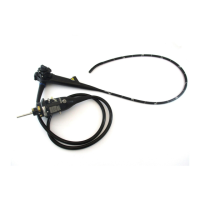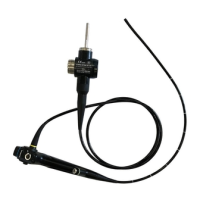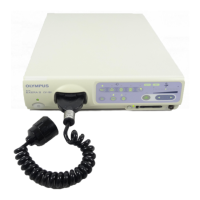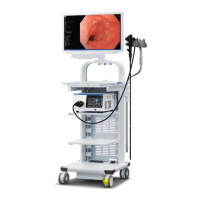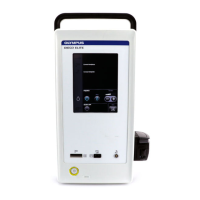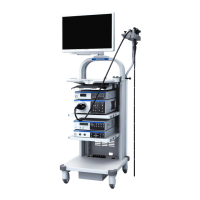12
Important Information — Please Read Before Use
BF-190 Series OPERATION MANUAL
Examples of inappropriate handling
Details on clinical endoscopic technique are the responsibility of trained specialists. Patient safety in
endoscopic examinations and endoscopic treatment can be ensured through appropriate handling by
the physician and the medical facility. Examples of inappropriate handling are described below.
• Applying suction with the distal end in contact with the mucosal surface, with higher suction
pressure than required or with prolonged suction time may cause bleeding and/or lesions.
• The endoscope has not been designed for use in retroflexed observation. Performing
retroflexed observation in a narrow lumen may make it impossible to straighten the angle of
the bending section and/or withdraw the endoscope from the patient. In case the patient
moves due to coughing and other reasons while the endoscope is angulated in the narrow
lumen, the bending section of the endoscope may be pushed into the lumen and be
retroflexed. Pretreatment to control patient’s coughing reflex and other possible unexpected
moves is the responsibility of trained specialists. Retroflexed observation should be
performed only when the usefulness of doing so is determined to be greater than the risk that
is posed to the patient.
• Inserting, withdrawing, and using EndoTherapy accessories without a clear endoscopic
image may cause patient injury, burns, bleeding, and/or perforation.
• Inserting or withdrawing the endoscope, rotating the insertion section, applying suction, or
operating the bending section without a clear endoscopic image may cause patient injury,
bleeding, and/or perforation.
• For reasons described below, do not rely on the NBI
*1
observation mode alone for primary
detection of lesions or to make a decision regarding any potential diagnostic or therapeutic
intervention.
NBI has not been demonstrated to increase the yield or sensitivity of finding any specific
mucosal lesion.
NBI has not been demonstrated to aid in differentiating and establishing the presence or
absence of dysplasia or neoplastic changes within mucosa or mucosal lesions.
*1 Narrow Band Imaging. For more details, refer to the instruction manual for
the video system center CV-190.
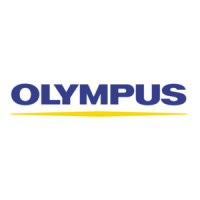
